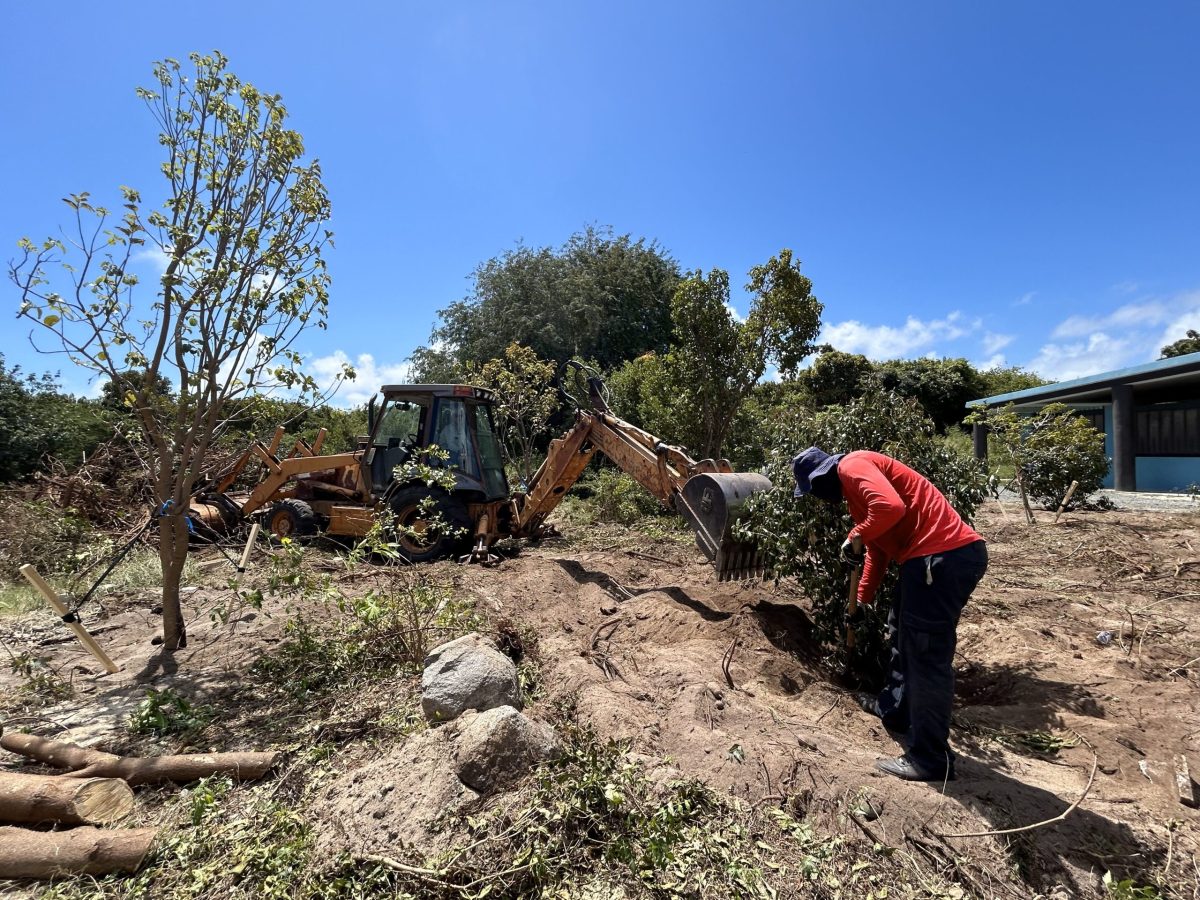Native trees planted at Long Bay
[ad_1]
Last Thursday morning at Long Bay on Beef Island, Angela Burnett-Penn pointed to a bushy tree growing on a sand dune near the ocean.
“This is the enemy. This is the invasive neem tree,” she said, adding, “It does have a number of human health benefits, but it is entirely invasive to the Virgin Islands.”
The species, which is ubiquitous at Long Bay, is a big problem for the beach, according to the government environmental officer.
With the help of Hurricane Irma in 2017, she said, neem and other invasive plants have pushed out some 75 percent of the natural vegetation along the beach’s eastern sand dune.
“When you have plants that don’t belong to a site, they’re sort of a misfit to the ecosystem, like a virus,” she said, adding, “They take resources, and they don’t add any benefit to it.”
By disrupting the natural ecology, invasive species can also contribute to beach erosion and threaten seabirds, turtles and other wildlife that depend on native plants for their survival.
Now, Ms. Burnett-Penn is heading a government programme designed to return the beach to its natural state.
Operation Restoration — which started last week with support from the Sir Richard Branson-backed Unite BVI Foundation — is the second phase of a Long Bay beach management plan that was finalised in December 2022.
‘Hundreds of neem trees’
In recent days, workers have been removing invasive species like neem, wild tamarind and cow heel bush and planting native ones like seagrape, loblolly, cedar and lignum vitae in their place.
“We’ve taken out literally hundreds of neem trees from the site this week,” she said of the project headed by the Ministry of Environment, Natural Resources and Climate Change.

240 native trees
The first round of planting is to include about 100 seagrape trees and 140 other native trees.
“One of the advantages of native species, whether at this site or anywhere else, is that they’re built for the environment, so to speak,” Ms. Burnett-Penn explained. “So these are pretty salt-tolerant, drought-tolerant species that will be out here. So they wouldn’t require, in the long term, continued watering.”
Post-Irma damage
The restoration efforts, she said, should help reverse some of the damage caused to the beach during a period of rapid change in recent years.
“In about a five-year period or so, it went from being a totally pristine, untouched, basically natural beach to being a highly commercialised, highly used beach in many ways that it was never historically used,” she said.
This change, she explained, was partly a response to the devastation of Hurricane Irma, which destroyed the infrastructure at popular beaches like Cane Garden Bay and redirected many cruise ship tourists to Long Bay.
“It happened in a very unplanned, haphazard manner,” she said.
A full restoration, she added, will take extensive time and effort.
“It’s a lot that’s going to be needed to bring this site back to what it used to be,” she said. “What you see here today just represents a first step in that right direction.”
Community support
Soon, she hopes to source enough support to plant hundreds more native trees.
For the current phase of the project, Unite BVI assisted by providing funding for landscaping and for planting trees procured by the government.
The non-profit organisation also supplied a Kawasaki multi-purpose vehicle that will be used for various maintenance activities.
“This vehicle will assist with the daily duties of the beach warden team, including clean-up of the site from any garbage, litter, … as well as sargassum removal,” Ms. Burnett-Penn said, adding, “We have a lot of sargassum washed up at this beach.”
Pilot project
The ongoing work at Long Bay is the start of much broader plans for the territory’s beaches, according to the environmental officer.
“This is really just a pilot beach management plan: the first of hopefully many to come across the territory as a part of implementing our 2020 Beach Policy, which seeks to really enhance the way in which beaches are managed to ensure that they’re there for everybody’s benefit and enjoyment,” she said.
[ad_2]
Source link


